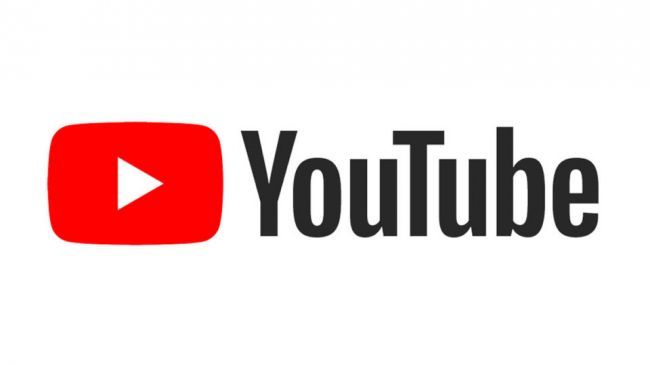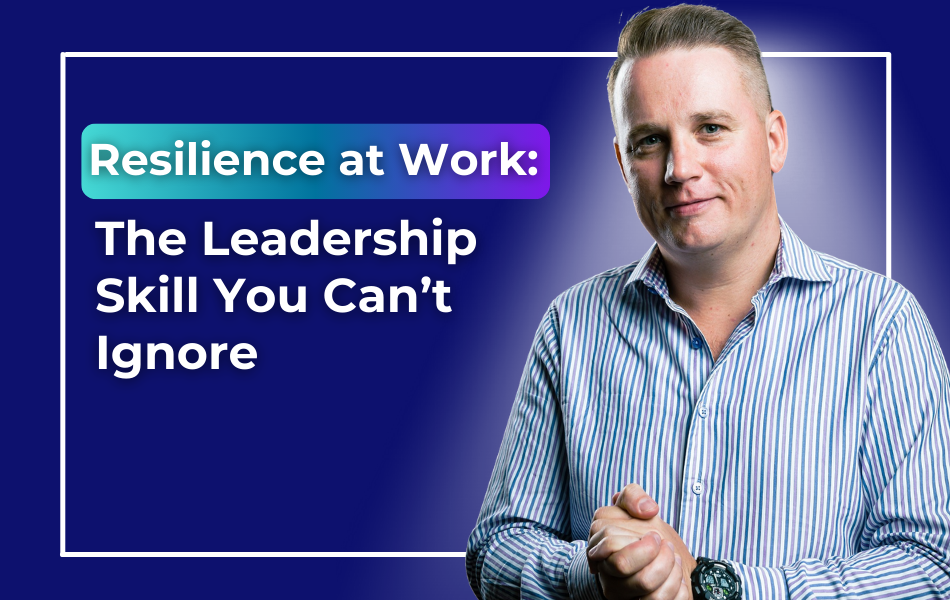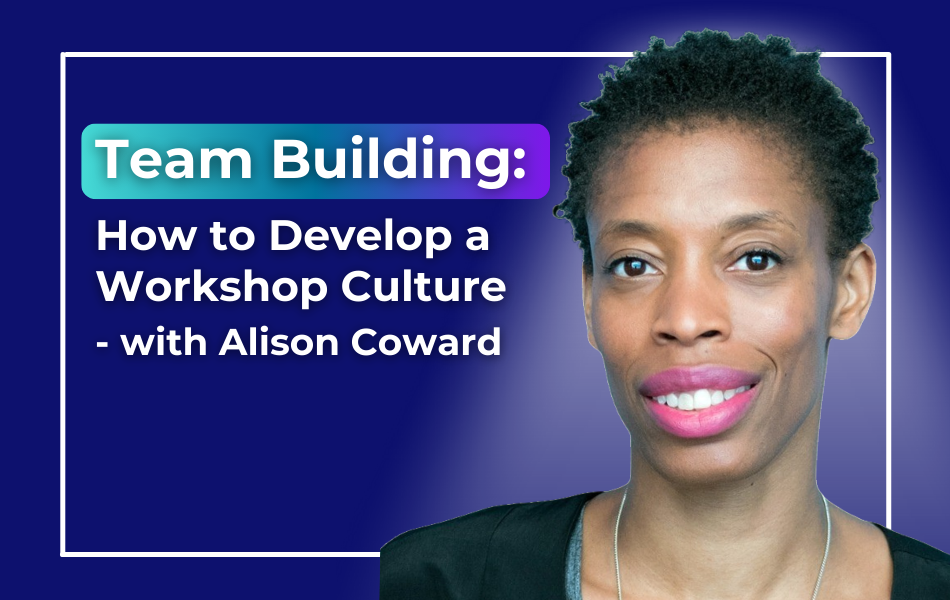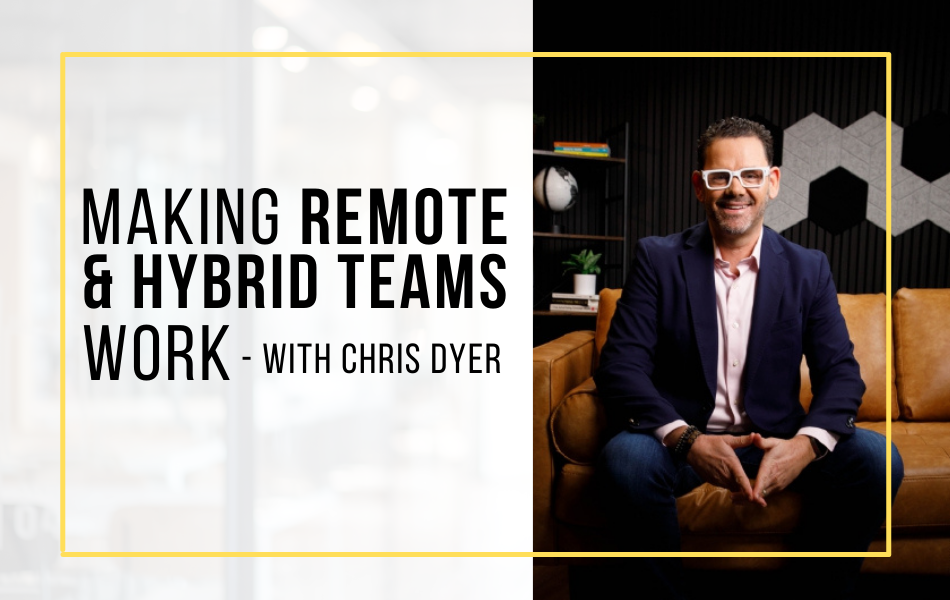
230. Making Remote & Hybrid Teams Work – With Chris Dyer
About this Podcast
Ep. 230 – Ever feel like remote leadership requires a whole new playbook?
In this episode of The Manager Track podcast, Ramona Shaw speaks with Chris Dyer, a remote work and company culture expert. Chris shares unconventional approaches to leadership, challenging the traditional use of one-on-one meetings in remote or hybrid setups. He offers alternative strategies to improve team communication, decision-making, and cohesion.
The discussion includes innovative meeting formats like “Cockroach” problem-solving sessions and “Tsunami Planning” exercises to help teams navigate challenges and stay connected. Chris highlights the need for leaders to adapt and experiment to maintain productivity and trust in remote settings.
If you’re leading in a remote or hybrid environment and want practical strategies to improve team dynamics and communication, this episode is packed with unconventional ideas and techniques.
Watch it on YouTube HERE.
Episode 230 Transcript:
0:00:00 Ramona Shaw: Welcome to this episode of The Manager Track podcast. This week’s episode is with a guest, and we’re going to talk about how to make remote and hybrid teams work. This is a topic that often comes up in coaching conversations around what do I need to do differently? How do I engage team members more effectively? How do I know how to trust them? Or what do I do if I get a sense that they may not be pulling their weight, but I don’t know for sure because I can’t see them?
0:00:31 Ramona Shaw: We’re going to talk in this podcast episode with my guest, Chris Dyer, about all of these things, and Chris will shed some light on his experience, and he will present to you a number of new and somewhat, I want to call them, controversial ideas on how to go about it. One thing that he talks about is around one on one meetings and meetings in general, how to change them up. I found this conversation with Chris really insightful, and it got me thinking, too, about what are things that I’ve used to do in an office environment and just continue to do, even though they may not be the best option in a virtual environment.
0:01:16 Ramona Shaw: Now, as you listen to this podcast episode, I do encourage you to take that stand, that mindset that there is not one way to do this. And when you notice something isn’t working well, look for alternative options. Experiment with the current setup to fix out what are the different components that I have control over and how can I make this work better. Get creative. Get inspired by Chris and his ideas.
0:01:42 Ramona Shaw: But there is not one way to do this only, and there’s not one right way versus everything else being wrong. And so with that said, I hope that you take these ideas as inspiration, as food for thought, and potential opportunities to experiment with in the form and style that works for you and your team or for your company. Now, before we dive in, a short introduction to Chris. Chris Steyer is a recognized company culture and remote work expert.
0:02:11 Ramona Shaw: He’s a former CEO managing thousands of people, and his companies have consistently been named the best place to work. They’ve also been named the fastest growing company by Inc. Magazine five times. So now Chris routinely speaks and consults about remote and hybrid work, and has actually, by Ink magazine, been ranked as the number one leadership speaker on the topic of culture. So you’re in for a treat, and I hope you find this a thought provoking and inspiring conversation as well. Let’s dive in and welcome Chris to the show.
0:02:47 Ramona Shaw: Here are the two questions this podcast answers. One, how do you successfully transition into your first official leadership role and two, how do you keep climbing that leadership ladder and continuously get promoted? Although the competition and the expectations get bigger, this show, The Manager Track podcast, will provide the answers. I’m your host, Ramona Shaw. I’m on a mission to create workplaces where work is seen as a source of contribution, connection, and personal fulfillment. And this transition starts with developing a new generation of leaders who know how to lead so everyone wins and grows.
0:03:23 Ramona Shaw: In the show, you’ll learn how to think, communicate, and act as confident and competent leader you know you can be. Chris, thank you so much for being on The Manager Track podcast. It’s great to have you with us.
0:03:34 Chris Dyer: I’m excited to be here. Thanks for having me.
0:03:36 Ramona Shaw: So I did say in the introduction that a lot of my clients ask about how leadership changes, how managing people changes when their team is remote or is hybrid or even is in a different office, but still in an office. And we see a lot of organizations these days deciding yet again whether they do want to stay remote or hybrid or if they want to go back to an in office setup. And managers are somewhat confused for those who have sort of figured out a system in one way or another, that now these changes are going to come again and that the whole team will have to adjust. And so what I’m curious as we dive into this conversation is you are in the midst of all that and speaking with organizations all the time.
0:04:21 Ramona Shaw: What is your take on it? Where do you see a misalignment in terms of your observations compared to what we read in the news?
0:04:28 Chris Dyer: Yeah. So as someone who formerly ran a completely remote organization since 2009, I had thousands of employees working across the United States. We really found that you had to do it differently. And we learned so many lessons. I put them all in a book, and I was really lucky that that book came out right as the pandemic happened. And so I then took that knowledge, and I was talking to hundreds of organizations. I think I did 200 virtual keynotes during COVID the most important change that you have to make as a leader.
0:05:01 Chris Dyer: People struggled to grasp that once they did it, they immediately came back to me and said, wow, this changed everything. It’s a really simple change and simple to do, but it’s not easy to implement. You’ll have to kind of, like, rework your. Your life a little bit, and this changes. Stop having one on one meetings.
0:05:21 Ramona Shaw: Ooh, okay, this is chutzy.
0:05:23 Chris Dyer: Tell us more one on one meetings, especially in remote and hybrid, or you’re in different offices if you’re not all in the same place at the same time. One on one meetings are killing your productivity. They’re killing the productivity of your people. They’re slowing down the decision making processes in your organization. You are lowering the amount of information that’s being shared and your ability to get people really going and excited and ultimately engaged in work.
0:05:52 Chris Dyer: When we’re all together in one office, information can move sort of like Willy nilly and a little bit haphazardly, and it kind of filters through the office, you know, or you might walk in the door and I noticed that you’ve been crying the last three days. You come to work, hey, can I help you out? What’s going on at home? Are you okay? We’re remote. You pop up on that zoom screen, you’ve turned on that zoom face, and you’re totally fine. You had that meeting and you shut up and then you cried for an hour. There’s your leader.
0:06:21 Chris Dyer: I have no idea what’s happening with you. Start coming together as a group. Start meeting with your people. Try to get as many people, five to seven together, that belong in that conversation. For shorter, smaller meetings, don’t go from 1001 on ones to a 1000 1 hour meetings. You’re defeating the purpose, right? Having more little 15 minutes meetings of, hey, we need. I need to talk about this thing.
0:06:48 Chris Dyer: Why don’t I just get the five people together who need to know about this for 15 minutes and I can tell you we could talk about it really quick as opposed to me trying to remember to tell my six direct reports the same thing in those one on one meetings. Right. So there’s a lot more to it. But let me stop. I’ll let you comment on that because.
0:07:08 Ramona Shaw: That definitely contradicts my perception and my experience of using one on one meetings. When you’re in an office, there’s a lot more of the connection that happens somewhat naturally where you might grab someone, maybe find someone to quickly check in with them at the water cool or whatever, get a coffee and so forth. But when you’re remote, you don’t know what’s going on for them. Where would you be able to connect on that level where they’re willing to share with you doing and ask questions they may not feel comfortable asking in front of their peers.
0:07:41 Chris Dyer: When we start grouping more often and coming together with our team, we can support each other, we can deliver information at the same time, so everyone is getting an equal or fair assessment. I might tell Bob and Jason the whole story, and I only had 15 minutes with you and you got part of the story that can be really hard for employees to deal with. But if I tell everyone the same story at the same time, they’re all getting it equally. What we do is start sharing each other’s goals of creating that environment where we are all there to help each other, which takes the pressure off the leader to be the coach, the therapist, the boss. Why can’t we all share in this load? Ultimately, our team is supposed to be getting better. Our team is supposed to be doing the thing that we’ve been hired to do.
0:08:34 Chris Dyer: And so how do we, as a group, do that? To answer your question, I had this really great exercise. It’s called bonding. The goal was to do this once a day. Did we do it once a day all the time? Of course not. If we could get an entry four times a week, then that was great. It was a good week. We would pick one meeting a day, usually at the beginning or end of the day, and go. And this is just with your team, the people you work with all the time.
0:08:58 Chris Dyer: So if you don’t know Marjorie from accounting and she’s in the meeting, you’re not doing this with someone you barely know in the company. This is with your team. And you’re going to go around the room and say, how is everyone showing up? And they can go around and tell you how they as the complete existence of themselves. Eventually, as you practice this, they’ll start telling you, I just got a puppy. I haven’t slept in three.
0:09:22 Chris Dyer: I’m taking care of my mom. She’s going to chemotherapy, and I’m in Zod going through all that like you, like, oh, I didn’t realize Ramona had had this problem. This is why she’s been short with me. This is why she’s not getting back to me. It’s not that she hates me and thinks I’m a jerk or doesn’t like me. It’s because she’s got crap going on in her life, and maybe she’s not 100% here at work, and what can I do to help her?
0:09:45 Chris Dyer: Right? And so you start getting these great answers now, at the end of the meeting, we ask everyone, how are you leaving the meeting? I see that 99% of the time, people answer this question very specifically about them as the employee and them in that meeting. And so it’s no longer the personal stuff. I’ll tell you, I thought I ran some great meetings as a CEO, and I had times where I asked this question, and they were like, yeah, I don’t know if this is going to work. I’m not feeling good about the solution.
0:10:14 Chris Dyer: I’m not really happy with what we discussed today. And I’m like, what? This was the best meeting of all time. I thought we solved all your problems and made everything happy. They were like, I’m leaving this meeting feeling unsure and anxious about what we decided. Whoa, we need another meeting. What you’re thinking and what I’m thinking are not aligned here. And I would have sent you off and asked you to deliver on this thing we decided upon, and you would have been up, anxious and unsure, probably passive aggressive, avoided it. Here I’m, as a leader going, why are you doing what I’m asking you to do?
0:10:48 Chris Dyer: I thought we talked about this, but we really didn’t talk about it. The last part is, you, as the leader, have to go last. Don’t say, I heard this guy on a podcast, let’s do this exercise. I’ll go first. I’ll set the example. Don’t do that. They get to go first if they’re struggling. Someone’s like, yeah, I just found out my uncle died. Don’t go. Okay, then. Sorry about that. They come to you and go, oh, I’m having such a hard time with the budget.
0:11:15 Chris Dyer: No one cares if your people are struggling. You have to deal with their stuff to help them. And if that means you, as a leader, don’t get a turn. Sometimes that’s what it means to be a leader. You got to shut up and help your people and send them home. If you think they’re really struggling or figure out how you can take on some of their work, you have to actually show up for them. That’s how you connect and really help people who are working at different times, at different places. Remote hybrid, a different office is to come together and really ask how they’re doing.
0:11:46 Ramona Shaw: So what I’m hearing from you is really focus on the team dynamic versus that one on one, manager versus direct dynamic. And I buy into that. I can totally cosign because what you said with not worrying all the weight on your own shoulders as a manager, that’s what often happens, because somehow we have this idea that the manager know it all, should do it all, and should be the one who gets asked for all the things and provide all the help, when in fact, there’s an entire team there that can support, and then that brings the team together, because now there’s a purpose for being a team versus just being in the same box on an.org chart.
0:12:25 Ramona Shaw: And I like what you’re saying here with slowly introducing sort of more personal, holistic conversations in that team setup to foster trust and vulnerability. When we see other people go first or share, we may start to become more vulnerable or open as well. Or at least we start to feel more connected to them or we can relate better. I definitely agree. I think it’s interesting that you say don’t do one on ones, am I right? Assuming that you’re saying when you have a remote or hybrid setup or people in different places, focus more on the team dynamic, get the group together, use the bonding exercise, share with them as a group and then only situationally. And when called for, do you have one on one conversations versus making that the main channel of communication?
0:13:15 Chris Dyer: You might be working with somebody on a project and in a one on one meeting, that’s fine, if that’s what that calls for. There may be an HR issue, that person may need coaching or be on a pimp and not doing well. There are situations where you’re definitely going to have one on one. I’m talking about that at 09:00 a.m. on Tuesday. You and I always have a one on one, whether we need it or not. That’s on the calendar. It’s this fixed thing. And we all know what happens to those meetings. They get canceled all the time, they get pushed to another time, or you’re one of the few leaders in the world that shows up for those things every single time.
0:13:50 Chris Dyer: That becomes the time when decisions are made. And so you go an entire week before you actually talk to that person and help them make a decision. To me, that is insanity. Why would we wait that long to be able to help someone make decisions, give them final approvals, talk through their issue? Why aren’t we doing that all the time again with the group? I’m meeting with the group every day or every other day or whatever. The cadence is right for your team.
0:14:16 Chris Dyer: Why aren’t we meeting there and bringing those things up and getting those approvals and helping everyone else understand what’s happening with that person and the team and how it’s going to affect everybody and when we’re in the office and if I see you, you talked about had to grab somebody and I had this little one on one with them. Everyone’s going to kind of know that we either going to see that you went and had that one on one or the corner of our eye that you went to an office or like somehow we’re going to find out about it and then I might know you met with Bob and that means now I can meet with you, because now the next part of that project is going to move forward.
0:14:51 Chris Dyer: But if you’re spending all your time meeting one on one, I have no idea who you’ve met with. I have no idea when it’s my turn. I have no idea when I’m supposed to connect with you. And so I have to wait for this cadence of one on one every week or every two weeks to actually get anything done. And that’s why people feel like our culture isn’t the same and we’re not as productive because you’re doing everything antiquated. You have to do it a new way. When it’s remote work.
0:15:15 Ramona Shaw: Yeah, I think this is where it gets tricky because we bring in our old behaviors and habits into the remote setup. And still a lot of the people leadership aspect is the same. But then I like the idea of experimenting and really questioning what we’re doing and what works and what doesn’t work. And when we see, no, it doesn’t work. And actually, those one on ones, I fully agree with you. If you cancel your one on ones all the time or you’ve got nothing to talk about, yeah. It’s time to rethink your one on ones.
0:15:42 Ramona Shaw: Make them shorter, make them different. Or as you say, rethink the concept in its entirety.
0:15:48 Chris Dyer: Yeah. And you can have a set time of like an office hour maybe. Like you want to set a time where people could schedule with you if they feel like they have an issue that needs your attention. Sure. During COVID my senior team, I did a 15 minutes window. They could come in if they wanted the need to talk about what was happening and all the anxiety and the stress. It was special times. We did special things, but it’s like repeating, you know, don’t really have a purpose. Honestly, when I got rid of all those one on ones, the gossip stopped.
0:16:19 Chris Dyer: People stopped coming to me and telling me, oh, did you know so and so did this. I hated that stuff. If we needed to talk about it, let’s talk about it with the team. Don’t be coming to me and telling me you heard Bob is maybe looking for another job or what? Come on.
0:16:37 Ramona Shaw: I definitely a fan of office hours. I think they’re very useful because it does eliminate some of the constant, what we call quick questions. Right. Hey, you have a quick question here. You get everyone sort of slacks you or emails you or whatever tool you’re using with all these little things. To me, the one on one meeting is a tool to consolidate some of that. It’s not just because it pops in my head. I think it’s urgent when in fact it is an urchin. I add it to a list and I’m not interrupting people in their workflow, especially as a manager, when you have stuff to share and you share it, everyone’s going to drop what they were doing and that has a cost to their productivity.
0:17:13 Chris Dyer: We actually had to solve this problem too. This is the second big thing that people can change to help remote work for hybrid and whatever be better. And that is to change your meeting types. I don’t know who decided this, but when Covid happened and people went remote for the first time, they all started having the exact same meeting over and over and over again. The same 30 minutes, same 1 hour meeting over and over.
0:17:36 Chris Dyer: And people, they weren’t really sending good agendas and people didn’t really know exactly what they were supposed to be doing in these meetings except just keep logging off all day long, right? Oh my mute buttons on. We had that 5000 times a day. So what we came up with was these little names for meetings. The name of the meeting told you what was going to happen, how long it was going to be, what the rules were, and you knew how to act and participate in the meeting.
0:18:07 Chris Dyer: I’d heard this from leaders that I work with going to companies asking to help. And I hear some leaders all the time. I’m not getting good ideas. My people don’t participate. They don’t turn on their cameras. It’s because they don’t know what they’re supposed to do. People want the guardrails, they want the rules. They want to know. You have a quick question? You need help? We call a cockroach meeting.
0:18:28 Chris Dyer: You’re cockroaching your bathroom. It’s a small problem. So 15 minutes meeting, usually with seven or eight minutes. I have one problem. So the one agenda item. Yeah. I can’t figure out how to get this thing done for the client who can help me put it in slack. Hey. At 01:00 cockroach media. Anyone who can help me, here’s the link. Be there. It was totally optional to attend. We’re not forcing people to come. Some people.
0:18:53 Chris Dyer: Hey, I know how to fix that. I know, or I have no idea how to fix that, but I would love to know the answer. So I’m going to attend that with me. I want to know what’s going on. Right. We created that thing and also democratized it for the employee. Anybody could call that meeting and then invite anybody they wanted. You want to invite the CEO? You think that’s a good idea. I think this is the right. Go right ahead. Now the CEO might say no, may not have time, but you’re free to try to get your problem solved. Not wait for your team meeting, not wait for your one on one employees. Ended up spending 9 hours on google trying to figure out the answer when somebody who would have been sitting next to them in the office would have known the answer.
0:19:35 Chris Dyer: But now we’re in different places. We need to recreate that moment of bliss, of accidental bumping into each other. Yep, we had ostrich meetings. Teach me how to do something. But then we had like tiger meetings which were, this is a big deal. You have a tiger in your bathroom. It is a really big deal. You get animal control, you get crane, you have to get like really strong people to carry the thing out. You have to prepare.
0:19:59 Chris Dyer: So if I call a tiger team meeting, big agenda, you’re going to know what you have to do to prepare. You’re probably going to show up and spend more time listening than talking. Like total change in perception. So I highly suggest people think about changing their meeting structures, different lengths, different types, different intensities. Give them names, you can call them whatever you want. Steal my names. I don’t care.
0:20:23 Chris Dyer: And that will help your people be far more effective because now they know what they’re supposed to do.
0:20:31 Ramona Shaw: Interesting. For the sake of completion, we talked about the cockroach and then you said the ostrich and then the tiger. So what is the ostrich meeting?
0:20:37 Chris Dyer: Ostrich meeting is the exact same format as the cockroach meeting. 15 minutes or less. One topic optional to, but it’s small change. Instead of cockroaches. I have a problem. Who could help me solve it? Ostriches help me get my head out of the sand. Help me understand. Who can teach me. Does someone know how to do a pivot table in Excel? Right? You might ask everyone in the company chat like, who knows how to do this? Oh, I know how to do that. I can help you. Cool.
0:21:04 Chris Dyer: Instead of me spending 9 hours on Google researching it, watching YouTube videos, trying to figure out how to do it myself, when the person who would have been sitting three desks away from me in the office could have just showed me a little quick.
0:21:18 Ramona Shaw: Right. And I assume that this also includes. Hey, I need a different perspective. I need some input. I need to get some feedback on something. So you do these different meetings, you have your regular team bonding meetings or team updates where you share information and that then is sort of that schedule, right? The routines that you have in terms of meeting culture. Did I get that right?
0:21:38 Chris Dyer: That is almost, there’s one more meeting type that we have that I think is super important for any type of working condition. We call it a tsunami planning meeting. Once a month, every team leader decided on a topic, a fake prompt. What would happen if the CEO was hit by a bus and in a coma for six months? What would happen if we doubled our business? What would happen if we lost that? Whatever the prompt is, they would meet for 30 minutes and the leader would give the prompt and try their best to shut up.
0:22:09 Chris Dyer: Let the team discuss this prompt, what they would do, and come out of it. A few things happen. You see who is doing a good job, who might need some coaching, who’s talking too much, who’s not talking enough, who’s not getting their ideas out and really being effective and like, you know, that’s a really smart person, and yet they didn’t say very much. And, you know, they had good ideas. Like, that’s a good coaching conversation, and it creates a lot of good meeting maintenance for the rest of the month.
0:22:39 Chris Dyer: So we have this little practice meeting, and then the leader can talk. We talk about what went well, where we could have done better, and how we could have had that meeting, could have been more effective. Any cool ideas that came out of that, that the company might like and might want to think about implementing or talking about. But usually the leader ended up just like, ah, I got to remind Jason that he talks a little too much.
0:23:01 Chris Dyer: He needs to shorten this up a little bit. And for the whole month now, Jason has done pretty good job remembering. He needs to keep his answers concise and not interrupt people. How much better are your meetings all month long that you did a little bit of practice? Think about if you play a sport, you play a musical instrument, you have a hobby, you spend 99% of the time practicing and a very small amount of time actually doing the thing in a high stress situation.
0:23:33 Chris Dyer: Yet at work, we spend 100% of the time just doing the thing, and we never actually practice how to do the thing. We’re expected to have practice in school or some other job. We had a and we never practice how to have a good meeting. And so for us, that tsunami planning was great place to have a good ideas, stress free because they could say whatever they wanted, which was not a real thing. There was no judgment, there was no bad ideas.
0:24:01 Chris Dyer: Surreal. No bad ideas because it was fake. What we found was, it was incredible meeting maintenance for the leaders to be able to go, you know, Jason, shut up. Or, hey, Sally, you need to talk more. You have great ideas. How we get your confidence up so you feel like you can be heard. So that was the last one we used a lot.
0:24:20 Ramona Shaw: Wow. I’ve never heard of this idea and I love it. I think you’re spot on with one scenario. Just creative thinking that happens, that you train in those moments, low stake environments, but then also for you as a leader to observe a lot and provide feedback as a result of that you otherwise might not be able to do. Thank you for sharing that one. As I quickly shift gear a little bit, one of the questions that often comes up is, what do I do when I don’t see them working?
0:24:51 Ramona Shaw: They may be telling me that they’re working all the time, but I get a sense that they’re taking very long lunch breaks so that they leave every day at 03:00 and I don’t want to be the one who’s checking in or micromanaging, but yet at the same time, I feel deceived and just feel a bit like there’s a lack of trust that the other person isn’t being honest, and that then stirs up some conflict. What is your recommendation for leaders who are in that situation and don’t quite know how to handle it?
0:25:19 Chris Dyer: So there’s three parts to this answer. The first part is what you focus on grows. So if you’re focusing on, I don’t know if they’re working all that time, or I don’t know if they’re taking a longer line, that’s what your focus is. And you’re worrying about that all the time. That problem is only going to get worse. You should be focusing on what your high performers are doing, what your people who are contributing the most are doing, and talking about that, celebrating that, making that a point of like, this is what we value.
0:25:48 Chris Dyer: And I’m not for overworking and burnout. I’m not asking you to trick people into working 12 hours a day. I’m saying this person is doing an awesome job. They’ve delivered on this, and this is great. And you talking about that culture where people feel motivated, they feel the desire to be that way, too, because this is what good looks like. We don’t define what good looks like, and they’re just sort of failing. They don’t know what they’re supposed to be doing, what’s okay? What’s not okay.
0:26:16 Chris Dyer: The second part is the measurement component, which is, you better be very clear about what matters, what matters for that person. And are you measuring it so you expect them to do a certain thing or set a task or have a particular outcome. This happens with salespeople. They’d be like, I don’t know if they’re making enough calls and I don’t care. My thing is, you said their quota was this. Are they on target for their quota? If they’re on target and they’re going to hit their number or they’re really close, are they working 1 hour a day? Are they working 100 hours? I don’t care at this point.
0:26:54 Chris Dyer: Are they out playing golf every day? Great. Maybe that’s how they’re making their numbers. I’m not going to go in and micromanage them. Yes, they need to be available. Yes, there’s like time. They need to reach them. But like, if we’re very clear about what that output is, that’s the most important. They did everything I told them to do. They can do that. And then done the 03:00 maybe there’s another project or some other things you might want to bring to them, but that’s the most important thing. Not whether or not you think they’re taking an hour and ten minutes versus an hour for lunch.
0:27:26 Chris Dyer: There are people who will take advantage, who are not working hard, who don’t do a good job. If you’ve been very clear about the measurement component, you really understand what is expected of them and they’re not fulfilling that, it’s time for them to go. You keeping people like that around or sending the message to everybody else that that’s okay as long as you’re clear. Rewarding what’s successful, measuring it appropriately and within a healthy environment. We’re not asking people to be working on weekends and answering my call at 09:00 p.m. not talking about that kind of toxic stuff, but inside that healthy environment, if they’re not making it and they’re not doing what they’re supposed to do, and they’re not available, then you gotta let them go.
0:28:07 Chris Dyer: Right? Out of the thousands of people I ever managed, remote company, there was like 1010 people that we ever fired for that reason. It was usually a matter of helping them understand what we expected and what success looked like, and then they would step up on their own.
0:28:22 Ramona Shaw: The point that you’re making about the clarity of what is expected and then celebrating that is really important because I do think we have a sense of what the goals are, but we may not have broken it down clearly to what is expected. And then we start to worry how they’re doing and we start getting into that vicious cycle of constantly checking in and checking their calendar, tracking their response time to a teams or a slack message or an email, and that, as you called out with that first point, will grow and get worse versus really making sure that we set clear expectations.
0:28:59 Ramona Shaw: And even if someone is currently underperforming in terms of the job expectations because they’re still growing, one important thing that I often see people miss is not to set a deadline. Like, if you say, I understand you’re still learning this, but I expect you to be up to speed by the end of the month or in two months or whenever that is, so that there is a clear target.
0:29:22 Chris Dyer: If you are talking about this in the team setting, it is harder for that person to squirm out and finagle their way into continuing to be a slacker. They’re barely working and they’re trying to get by, and the team will sniff them out because they’re having to do more work, they’re having to take more on, they’re having to pick up that person. And so if you’re talking about what everyone’s working on and what have you been able to do when you’re celebrating successes and that person keeps not having anything happen, eventually they’re going to opt out or they’re going to change their behavior. Don’t leave yourself having to do all these one on ones by yourself, because there’s some really good manipulators, there’s some really good people that know how to, like, pretend talk and say the right thing, and then they’re not working in a team setting. You can see it, and it’s so obvious when you get help and everyone else knows the story and what’s going.
0:30:11 Ramona Shaw: On, this has been so intriguing, and I wish we could keep going, but we’re about to wrap up this conversation and I’m gonna. We’re gonna check in on where to learn more and get more of your ideas, the creative approaches that you’ve taken to implement remote work and hybrid work successfully. Before we wrap up, one final question. What is something that you’ve learned over the last three, four years during the pandemic, or something that you’ve changed your mind on from maybe the book that you published right before the pandemic versus.
0:30:40 Chris Dyer: Now something I’ve learned or changed my mind about? You know, I am the kind of person that believes that I can coach anybody and get them up to where they need to be. So I think as we went through that time and as I’ve sort of, like, had sold my company and I stepped away from a little bit. I realized that one of the things I probably should have done faster was fire faster. I should have gotten there a little bit quicker.
0:31:08 Chris Dyer: Some of the things I wish we hadn’t allowed to fester as long as they did were because I believed one more coaching session and this person would finally get it. We would finally be there, right. You know, let them go, found somebody else, and we would have all been happier and had less stress because they probably weren’t happy either. It wasn’t a good fit for them either, you know? And sometimes you have to push people out the door because they’ll keep the security of a paycheck even though they’re not happy with the work and they don’t like what they’re doing and it’s not really what they thought it was going to be. And that’s okay. It happens, right?
0:31:40 Ramona Shaw: And their confidence is impacted, too, because they know they’re not performing. I get that, too. I definitely had to learn that the hard way where I kept someone on for quite a long time. Ultimately, we terminated that person, and then they found a new job and were thriving in that job. It was one of those eye opening moments to realize I was the one keeping that person back from actually doing something they really enjoyed and are good at. And they’re being rewarded for that.
0:32:05 Chris Dyer: Yeah.
0:32:05 Ramona Shaw: Thank you so much, Chris, for being on and for sharing your insights with us. Where can we go to learn more?
0:32:11 Chris Dyer: If you want to text 3377. I think this just works for the US and maybe Canada. And you put my name, Chris, as the message, I will send you a PDF that has all of those different meeting types we mentioned and how to do them. Some other resources about how to survey your people in a more sane way than the annual survey. So little document. I’ll kind of send you some resources if you’d like. Otherwise, I’m on LinkedIn. My website is chrisdyer.com. I also do a ton on TikTok and Instagram, so wherever you hang out on social, you can find me on. Happy to connect.
0:32:46 Ramona Shaw: Thank you so much. We’ll drop all of that in the show notes. Definitely send Chris a text to get these resources. Chris, thank you so much for being on. Really appreciated that conversation.
0:32:55 Chris Dyer: Thanks for having me.
0:32:56 Ramona Shaw: Thank you. If you enjoyed this episode, then check out two other awesome resources to help you become a leader people love to work with. This includes a free masterclass on how to successfully lead as a new manager. Check it out@archova.org Manager Masterclass. The second resource is my best selling book, the confident and competent new how to quickly rise to success in your first leadership role. Check it out@archova.org
0:33:24 Ramona Shaw: books or head on over to Amazon and grab your copy. There you can find all those links in the show notes.
REFLECTION & DISCUSSION QUESTIONS
- Which of the innovative meeting formats, such as “Cockroach” problem-solving or “Tsunami Planning,” resonates most with your team’s needs? How could you implement these in your next team session?
- In what ways do you currently use one-on-one meetings to manage your team? How might replacing or supplementing these with alternative strategies improve communication and decision-making?
- Reflect on a recent challenge your team faced. How might the techniques discussed in this episode have altered your approach to resolving it?
RESOURCES MENTIONED
- Chris Dyer’s Website
- Chris Dyer’s Books
- Connect with Chris on LinkedIn HERE
- Check out our free masterclass on how to successfully lead as a new manager: https://archova.org/masterclass
- Learn how to turn your 1-on-1 meetings from time wasters, awkward moments, status updates, or non-existent into your most important and valuable meeting with your directs all week. Access the course and resources here: ramonashaw.com/11
- Have a question or topic you’d like Ramona to address on a future episode? Fill out this form to submit it for her review: https://ramonashaw.com/ama
OTHER EPISODES YOU MIGHT LIKE
- Episode 141 –How Managers Should Navigate Remote Work & IT Security – with Denis O’Shea
- Episode 170 – Teaming in a Hybrid World with Sally Loftis
- Episode 183- Creating Effective, Engaging, and Enjoyable Meetings – Interview with Mamie Kanfer Stewart
WHAT’S NEXT?
Learn more about our leadership development programs, coaching, and workshops at archova.org.
Grab your copy of Ramona’s best-selling book ‘The Confident & Competent New Manager: How to Rapidly Rise to Success in Your First Leadership Role’: amzn.to/3TuOdcP
If this episode inspired you in some way, take a screenshot of you listening on your device and post it to your Instagram Stories, and tag me @ramona.shaw.leadership or DM me on LinkedIn at linkedin.com/in/ramona-shaw
Are you in your first manager role and don’t want to mess it up? Watch our FREE Masterclass and discover the 4 shifts to become a leader people love to work for: www.archova.org/masterclass
Don’t forget to invest time each week to increase your self-awareness, celebrate your wins, and learn from your mistakes. Your career grows only to the extent that you grow. Grab your Career Journal with leadership exercises and weekly reflections here: ramonashaw.com/shop
Love the podcast and haven’t left a review yet? All you have to do is go to ramonashaw.com/itunes and give your honest review. Thanks for your support of this show!
* Disclaimer: Shownotes may contain affiliate links. That means that I am awarded a small commission for purchases made through them, at no added cost to you.



